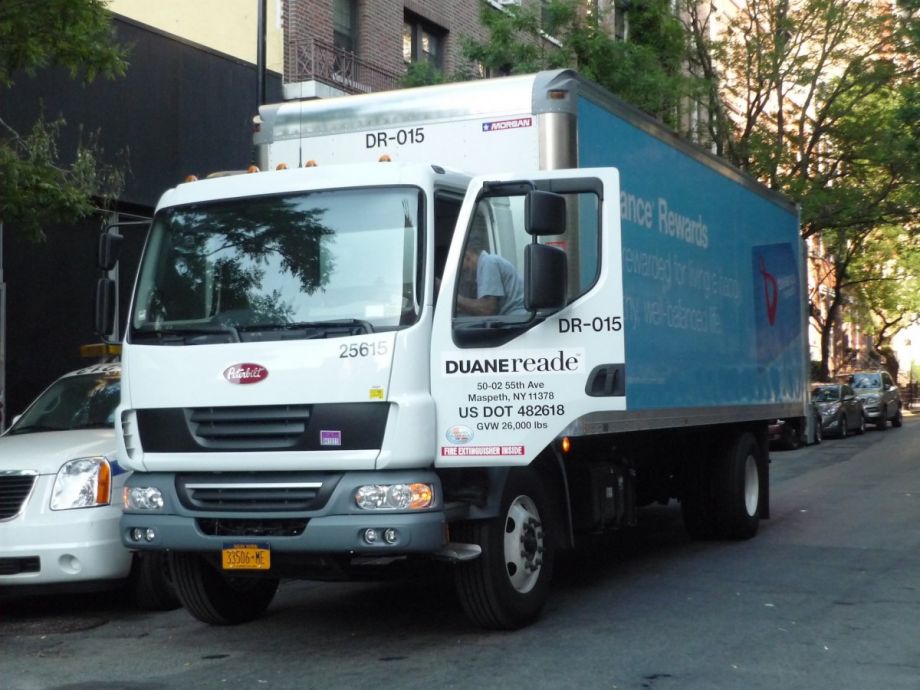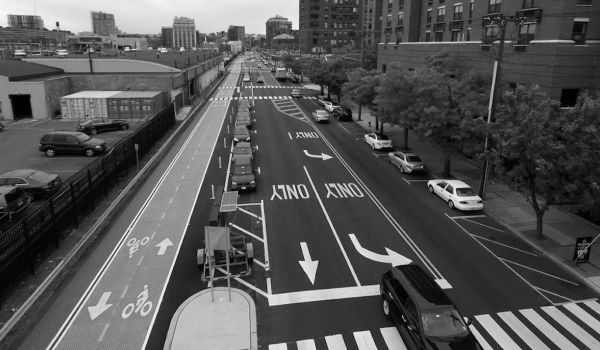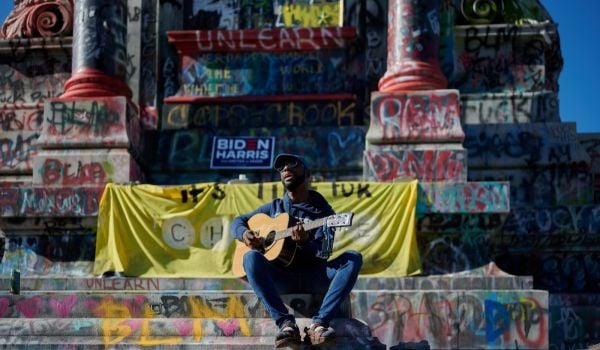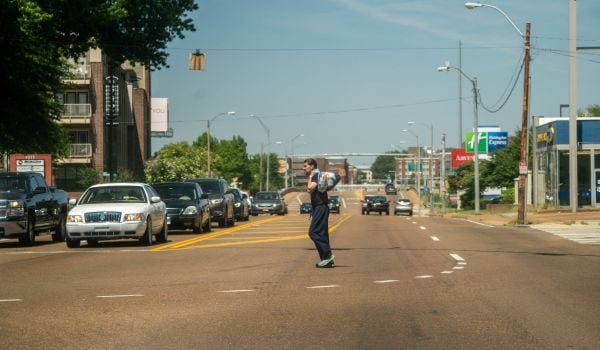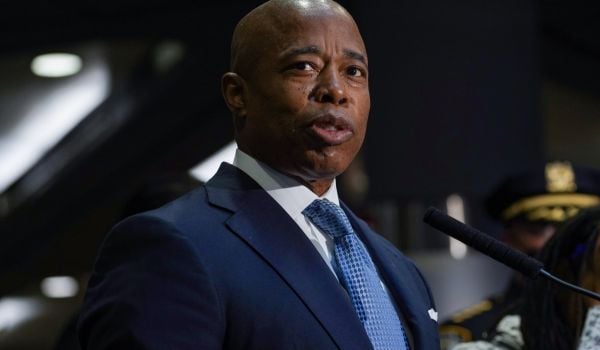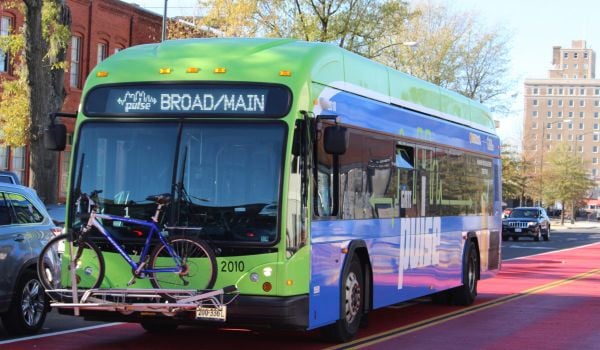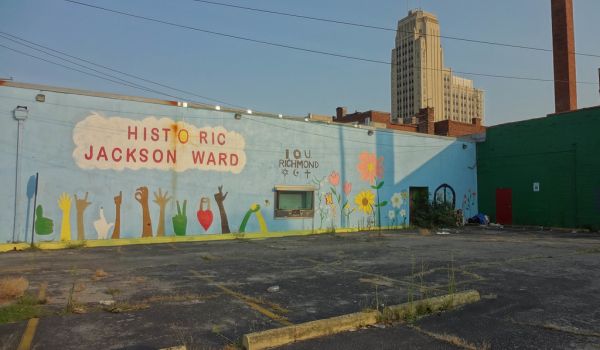Welcome to “The Mobile City,” our weekly roundup of noteworthy transportation developments.
Most of the “Vision Zero” talk focuses on the desire to eliminate collisions involving cars and bikes or pedestrians. But the combination of just-in-time business deliveries and the COVID-inspired sharp rise in package deliveries to homes has made trucks the real 14,000-pound gorillas of city street collisions with pedestrians and bikes. An analyst at the World Resources Institute said this week that cities that want to get serious about cutting bike and pedestrian deaths to zero need to design streets so that freight delivery vehicles can operate safely in mixed traffic — and that the vehicles themselves may need to be redesigned too.
Of course, another way to reduce collisions involving cars and pedestrians is to get more drivers out of their cars. That’s one reason cities have begun to seriously consider making public transit free to use. We can now add Richmond, Va., to the list of cities that are embarking on the fare-free transit journey.
Finally: Recall that Sacramento Regional Transit officials opted to send $50 million in transit funding back to Washington because they weren’t going to build a light rail line between Sacramento and West Sacramento? Never mind.
To Achieve “Vision Zero,” Cities Neet to Take Freight Vehicles into Account, Analyst Says
Ever since Jane Jacobs, urban advocates have pointed out that cities should be designed for people, not cars. But those people also use lots of stuff, which means city streets are filled with trucks. Many of these trucks are now delivering goods that residents would have gone to brick-and-mortar stores to buy, and as a result, cities are now becoming logistics hubs themselves: a former railcar assembly plant in South Philadelphia, for instance, is now an Amazon distribution hub, and a former railyard just outside Paris’ city center now houses both an urban farm and a “logistics hotel” — a large, multi-user package-sorting-and-distribution center.
All of these facilities mean more trucks on city streets. And, three researchers at the World Resources Institute’s Ross Center for Sustainable Cities argue in a Sept. 14 essay, this means that instead of pursuing “Vision Zero,” cities need to pursue a “triple-zero bottom line”: zero vehicle emissions, zero road deaths and zero exclusion from core services and opportunities.
Rethinking how cities handle urban freight, they argue, will be the most important element of that rethinking. The article headline notes that 80 percent of all goods deliveries begin or end in cities, and delivery vehicles produce 40 percent of all transport-related greenhouse gas emissions worldwide.In the United States, they say, delivery vehicles are 50 percent more likely to kill pedestrians than passenger cars are.
“Logistics hotels” like the one in Paris are part of the solution, as they allow delivery vehicles to pool last-mile deliveries from multiple sources, thus reducing deadhead time on the streets. They also allow for the use of alternative delivery vehicles like e-bikes equipped to haul packages.
But they don’t eliminate the need for trucks, and trucks have special needs that conflict with those of pedestrians or bikes. Trucks need wide clearances for turning and ample room to load and unload goods, while bikes and pedestrians need narrow streets and protected spaces. “When we don’t account for that,” City College of New York professor Alison Conway says in the article, “we have freight vehicles obstructing travel and bicycle lanes.” She urges cities to design infrastructure like intersections and bus lanes with interactions between freight activity and vulnerable road users, like children, in mind.
The trucks themselves should also be redesigned, the authors say. In particular, the cabs of long-distance trucks should be reconfigured to minimize blind spots in front of and around the cab. Lowered cabins, redesigned mirrors and cab-mounted cameras all dramatically improve driver reaction time and stopping distance.
And finally, cities need to better allocate curb space to accommodate changes in delivery patterns and delivery companies should find ways to get more deliveries out of fewer vehicles.
Another City Climbs Aboard the Free-Transit Bandwagon
It’s now not a question of whether Richmond joins the list of cities with fare-free mass transit, but when.
The Richmond Times-Dispatch reports that all of the candidates for mayor of the Virginia capital have endorsed the idea that Richmond public transit should be free — including the incumbent, Levar Stoney. The Democratic mayor announced his commitment to making transit free at a news conference where he also unveiled a new city office devoted to issues of transit equity.
The candidates challenging Stoney for the job, City Council member Kim Gray and Alexis Rogers, the Virginia director for Care in Action, have also signed onto the free-transit goal. All three say the move would make it easier for economically distressed families who rely on the city’s transit system to get to and from work and perform needed errands.
Rogers, who has proposed creating a new city Transportation Department, was critical of the mayor’s announcement of the creation of the Office of Equitable Transit and Mobility within the city Department of Public Works, which currently oversees public transit matters in the city.
Stoney says that the new office will also help the city coordinate transit management and planning with the counties surrounding Richmond, all of which are part of a new regional transportation authority created earlier this summer. The authority and regional governments will be able to tap a multi-million-dollar revenue stream flowing from sales and wholesale motor fuel tax increases dedicated for spending on transit.
Sacramento OKs Cross-River Light Rail Line
That on-again, off-again light rail line between Sacramento and West Sacramento is on again, and the U.S. Representative who secured $50 million in federal money for it can rest easy again.
ABC10 Sacramento reports that, after first voting to kill the project on Aug. 24 (“The Mobile CIty,” Aug. 26), the Sacramento Regional Transit District (SacRT) board voted to proceed with construction of a 1.2-mile light rail line connecting downtown Sacramento with West Sacramento via a bridge over the Sacramento River.
The vote means that the $50 million U.S. Rep.Doris Matsui (D-Calif.) secured for the project won’t be going back to Washington after all. But it also means that local officials and the transit district will have to come up with the rest of the line’s estimated $130 million price tag, and some SacRT board members aren’t too happy at that prospect.
‘We did debate this last time. And it’s more of the same, we talked about cost overruns,” Sacramento City Councilman Jeff Harris said in Monday night’s virtual board of directors meeting. Harris also criticized the project as benefiting only West Sacramento, but the mayors of both cities back the line, and SacRT Board Chair Steve Hansen sees the line as a first step towards eventually extending Sacramento’s light rail network to Davis, where a major University of California campus is located.
Know of a project that should be featured in this column? Send a Tweet with links to @MarketStEl using the hashtag #mobilecity.

Next City contributor Sandy Smith is the home and real estate editor at Philadelphia magazine. Over the years, his work has appeared in Hidden City Philadelphia, the Philadelphia Inquirer and other local and regional publications. His interest in cities stretches back to his youth in Kansas City, and his career in journalism and media relations extends back that far as well.
Follow Sandy .(JavaScript must be enabled to view this email address)

